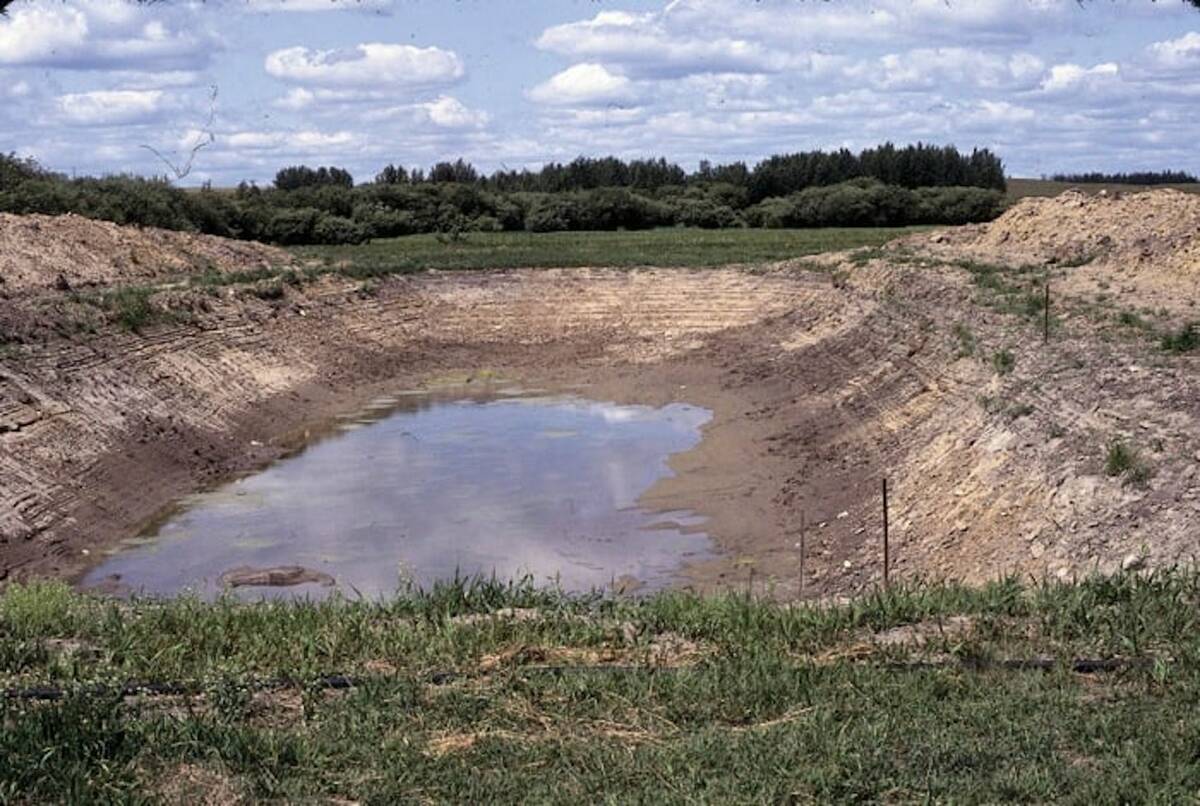BANFF, Alta. Ñ Three successive years of poor barley harvests and new competition from other countries are shaking Canada from its formerly strong position in the world malting industry.
“Canada’s quality image in the world with our malt has been tarnished because of these poor crops,” said Bob Chappell, president of Rahr Malting Canada Ltd. in Alix, Alta.
Last year his company imported malting barley from Europe, Australia and New Zealand to make up the shortfall, he told the Alberta Barley Commission annual meeting in Banff in December.
Read Also

Dry summer conditions can lead to poor water quality for livestock
Drought conditions in the Prairies has led to an decrease in water quality, and producers are being advised to closely monitor water quality for their animals.
Other factors are also forcing the Canadian industry to reconsider its global position. Higher natural gas prices added $30 per tonne in costs to the malting process, where heat is required to convert barley into malt.
The dramatic increase in the Canadian dollar relative to the U.S. dollar has made American plants more competitive.
Overcapacity in the European and U.S. malting industries makes it difficult for Canada to maintain its export position. As well, cropping patterns are changing in Eastern Europe and the United States.
“What is driving this industry is Eastern Europe, where they are changing from feed varieties to malting varieties,” Chappell said.
As well, the European Union supports value-added ventures, making it the world’s largest malt producer, supplying half the world’s needs.
Japan, formerly a good customer, is also changing. Weather-damaged crops left Canada struggling to fill that market with high-quality malt. The Japanese are not interested in taking cheaper product.
“The Japanese market has really been the bread and butter for the export malt market,” he said.
Japan has started producing a popular alternative. It’s a beer-like beverage called sochu that is cheap and does not need malt.
Chappell said his company is looking at offering a peeled, polished pearl barley to Japan for sochu to try to recover some of its losses.
China is the world’s biggest beer producer and is starting to grow and process its own barley.
Shifts in the American industry are also cause for concern. North America’s three newest malt plants were built in the U.S. rather than Western Canada.
Older operations in the East are being replaced with modern, large, efficient facilities in the U.S. grain belt. This is partly due to the expansion in corn acres that pushed barley production west and problems with fusarium head blight infections that affect malting quality.
“Fusarium chased barley further and further west. It was getting too expensive to operate malting plants where barley wasn’t,” Chappell said.
Another trend is the decision among some major brewing companies to align themselves with malt houses capable of meeting specific orders.
Anhauser Busch has a policy requiring one-third of its malt to be supplied by its own malting plants. It then buys the rest from other sources.
Canada remains the world’s third largest barley producer behind the EU and Russia. There are four major malting companies in Canada operating six plants.
Alberta produces 400,000 tonnes of malt, Saskatchewan, 220,000 tonnes, Manitoba, 90,000 tonnes, Ontario, 150,000 tonnes and Quebec, 90,000 tonnes.
Canada uses about 350,000 tonnes for domestic brewing and exports the rest.

















